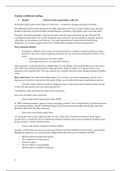Samenvatting
European Economics: Microeconomics articles summary
- Instelling
- Universiteit Van Amsterdam (UvA)
A full summary of the most recent articles week by week (De Grauwe, P. and Y. Ji (2014), Rodrik, D. (2018), Sandel, J. (2013), Zucman, G. (2014) and Zingales, L. (2017)).
[Meer zien]





